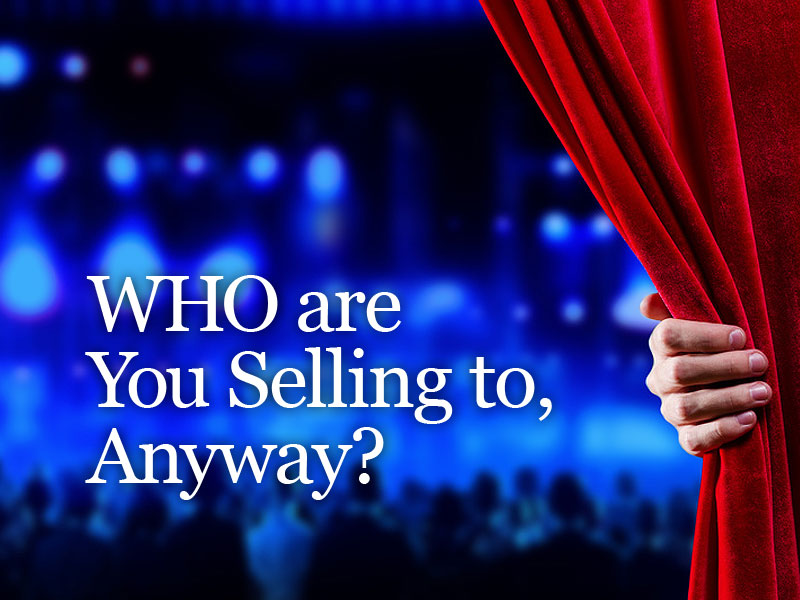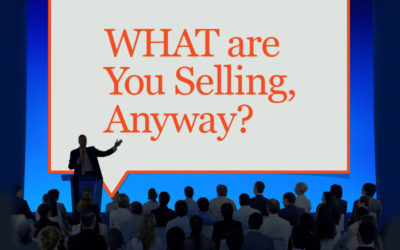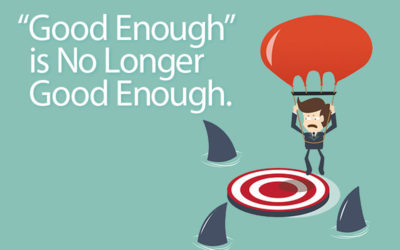Price, style, features and convenience will always be important factors to closing a sale. However, there’s a lot more to promoting your business than what your goods or services mean to your direct consumers. In fact, your audience is likely much broader than you realize.
Look Beyond Your Immediate Prospects
Over the years, I did marketing communications for a number of high-tech companies. One business, in particular, had a very specialized product for a very finite market. In all, they had about 400 prospects worldwide. But, that was nowhere near their entire audience. This fledgling start-up had an end game that was about more than moving products and gaining market share. Like many new companies, they had greater aspirations of going public or getting acquired by a larger company.
When we stepped back and thought about it, we realized that our message had to appeal to a broader audience of potential investors, industry analysts, employment recruits, local media, even friends and family. We learned that we couldn’t make the same direct sales pitch to everyone. In fact, like most businesses, the further we got from our closest prospects, the less sophisticated our audience became. And, likewise, our messages needed to follow suit. What made perfect sense to that narrow buying market meant little to the less-tech-savvy people who might not actually purchase our product, but still had an interest in knowing who we were and what we stood for. We concluded that they could, in the end, become our greatest advocates.
Will Your Grandmother Understand It?
Sure, you’ll still need that deep-dive sales pitch to those whom you want to open their checkbooks. However, as you define your value proposition, it’s vital that you keep in mind the total audience that might be on the receiving end. As you evaluate what you’re really offering, try to stay away from less-accessible industry jargon and elevate your message to its simplest form. What’s the emotional benefit that people will gain? How can you boil it down into terms that even your 85-year-old grandmother will understand? (With apologies to all grandmothers out there.) This high-level message is one that will be easily grasped by the biggest audience and help define your brand promise.
Establish Long-Term Equity that Transcends the Numbers
Every year, Forbes lists the most valuable brands. Usually, the top three are Google, Apple and Coca-Cola in some order. These values are not based on physical assets, intellectual property or market share. They’re based solely on market perception and the willingness of people to pay a premium for what they have to offer. Companies that have the highest brand equity have spent years — even decades — developing track records of consistently high quality. They’ve built market perceptions that have also enabled them to occasionally misstep without compromising long-term customer loyalty. They’ve established brand promises that mean something more to their audiences and have consistently upheld them. They’ve built enviable reputations that even their competitors have come to respect. Once again, these are mostly emotional connections.
There’s NO REASON why you cannot do the same with your own business. Sure, you might not have a $100 million advertising budget. But, you can still present your product or service in a way that appeals to that vital audience beyond your direct sales targets. There’s no reason why John Q. or Jane Q. Public shouldn’t be able to understand and appreciate what you’re offering — the emotional benefit, that is — even if they aren’t interested in purchasing your product. Think Nike and Harley-Davidson. Whether or not you buy their products, there’s no denying what they stand for. And it’s something we can all appreciate.
Break Down the Barriers You Helped Build
If you can’t quite get there on your own, don’t worry. It’s not easy. Thinking outside of the bubble requires overcoming false assumptions, conventional thinking and gut instincts. If you possess the humility to allow yourself to be challenged by others outside of your immediate circle, you’re halfway there. Foster relationships with outside strategic thinkers and doers who can help you gain the most clarity into what matters most to your total audience.
So, what’s keeping you?
Related Posts
Get real.
Don’t claim to be what you’re not. Embrace what you are, what makes you great and why that should be important to your audience.
WHAT are you selling, anyway?
In order to be an effective marketer, it’s imperative that we continually remind ourselves of the true value we bring to our markets. Usually, that customer benefit is intangible. Quite often, we learn that it’s an emotional one.
“Good enough” Is no longer good enough.
Those who can harness the benefits of new technology without losing sight of the basics, like branding, creativity and targeted outreach, will be poised for greater success than those who find contentment with what they consider, “Good enough.”
A dash of humility makes a better pie.
Isolating yourself in a bubble of self-adulation might make you feel good. But, it doesn’t get you anywhere and, worse yet, it prevents you from uncovering opportunities to distinguish your business from the competition.
An act of aggression can be a good thing.
Emulating your competition projects a sense that you belong. But, ultimately, your offering will only succeed if you can effectively distinguish it from the other guys. And keep doing so.
The last thing they need to hear Is all about you.
Sure, “all about you” is important. And you may be the one of best there is. But, when you promote your business, you’ll be better served if you save the best (you) for last.







